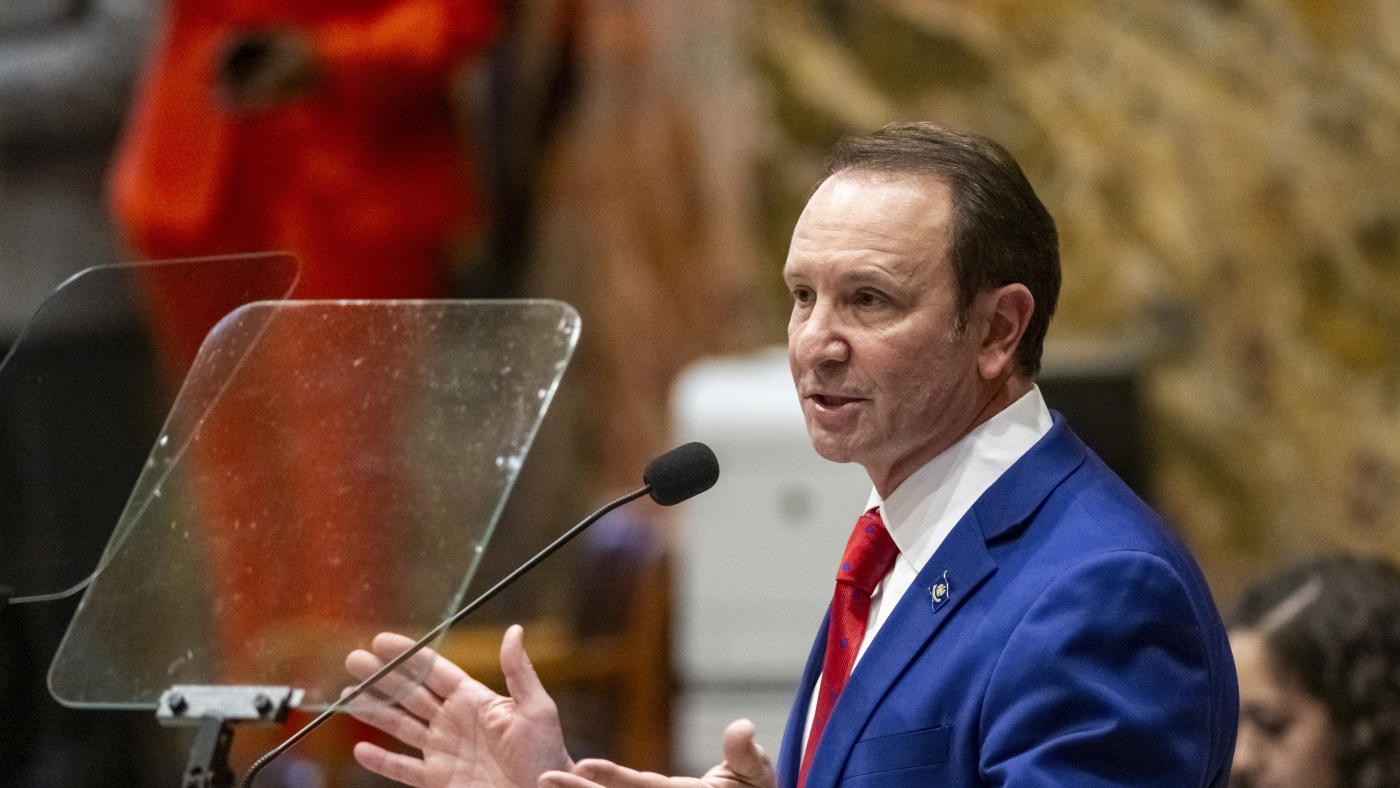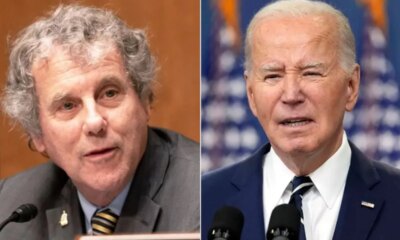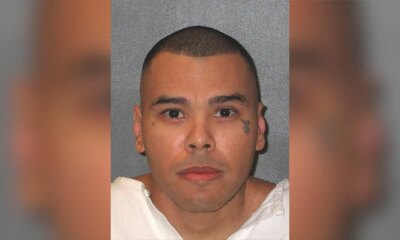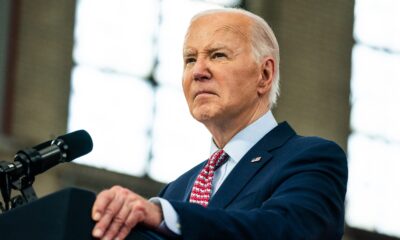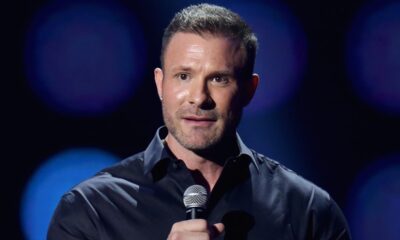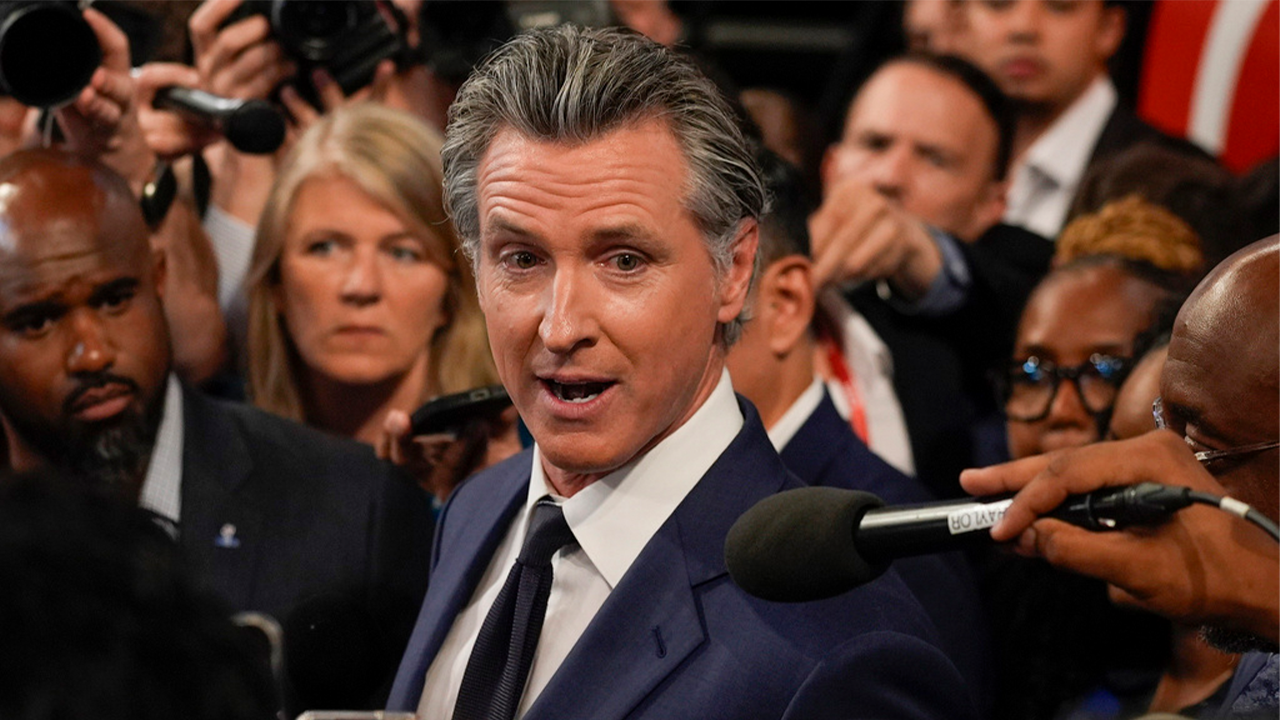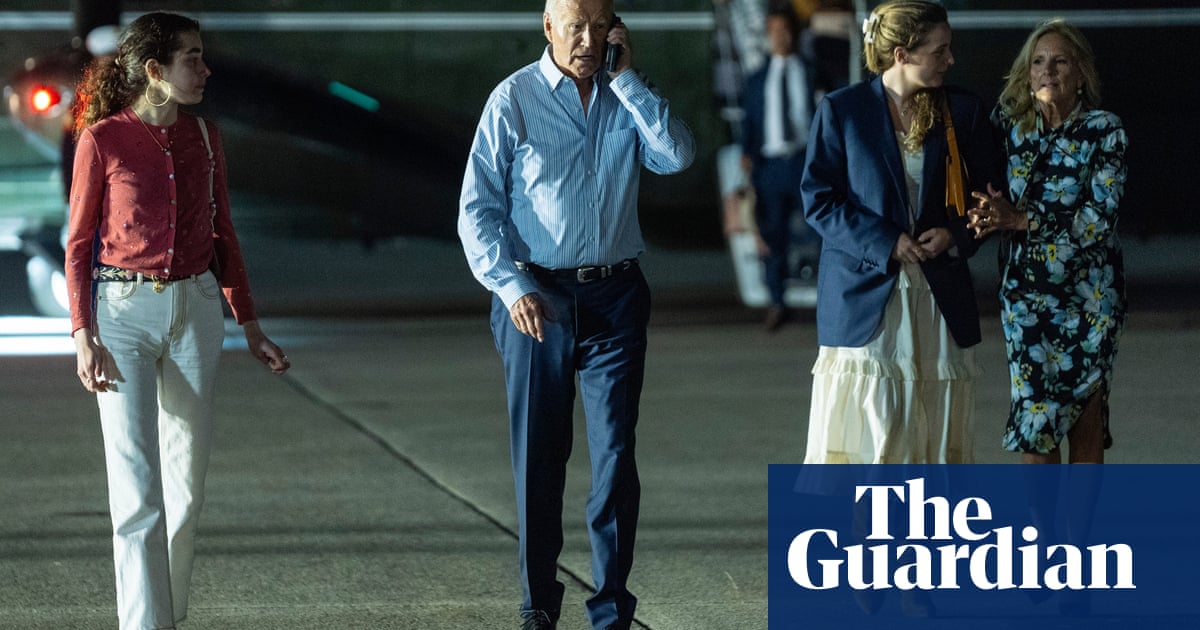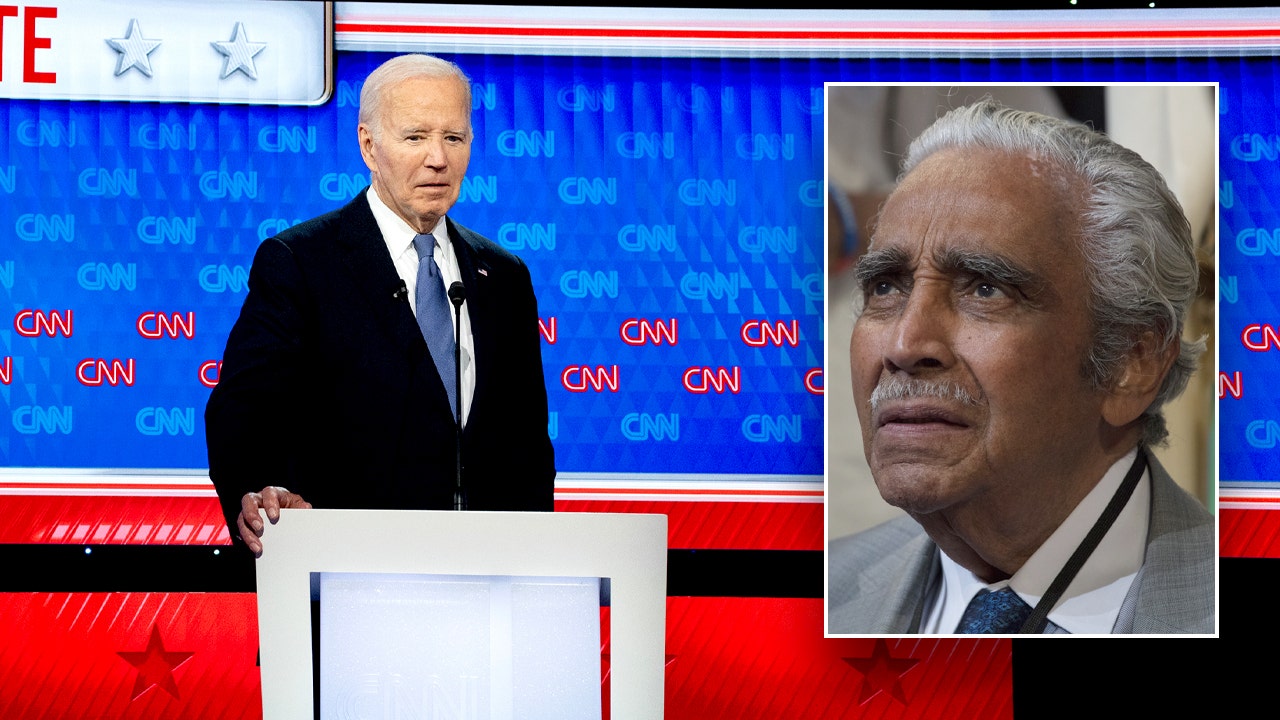New York
Migrant Crisis, a ‘Time Bomb’ for Democrats, Poses Test for Hochul

An influx of migrants arriving in New York City over the last year has stretched city resources and strained political relationships among Democratic leaders grappling with an emerging humanitarian crisis.
But until last week, Gov. Kathy Hochul of New York had stayed largely above the fray.
Now, as New York City’s shelter system barrels past a breaking point, Ms. Hochul is confronting an explosive political test that could define her first full term and have ripple effects for national Democrats.
Critics from the left and right have called on Ms. Hochul to take a more hands-on approach to a crisis that defies easy solutions, saying that the migrant state of emergency — which she announced last spring — needs the same sense of urgency as the Covid pandemic. She has not held frequent briefings on the issue, as she did in past years with the pandemic, and has avoided imposing far-reaching statewide policy, mostly leaving it to Mayor Eric Adams to play the public role of crisis manager.
Her circumspect and rather muted approach to governing is a conspicuous departure from the domineering presence of her predecessor, Andrew M. Cuomo, and it remains to be seen how her less in-your-face style will affect how New Yorkers view this crisis. Ms. Hochul has argued that she has been an active partner in dealing with the crisis all along, even if much of the state’s help has unfolded behind the scenes.
“This is nothing anyone could have anticipated and it’s been an enormous challenge,” she said in an interview on NY1 on Wednesday, adding, “We’re committed to continuing to work with the city to solve what is an enormous crisis. It is a federal crisis as well and we need more help.”
But with migrants continuing to arrive, Mr. Adams recently escalated his calls for the state to get even more involved. The mayor, as well as a coalition of immigration and community groups, has called for Ms. Hochul to implement a statewide relocation program so that upstate counties share the burden of housing migrants. And Mr. Adams and advocates have pressed for executive orders to prevent reluctant municipalities from barring migrants after Republicans in the city’s northern suburbs sued when the mayor tried to bus migrants there in May.
The growing pressure has forced the governor to balance upstate and downstate constituencies with opposing degrees of willingness to accept migrants in their communities.
Moving more migrants outside New York City is bound to spark divisive flare-ups in the suburbs and more conservative parts of the state, fueling attacks from national Republicans who have already harnessed the situation as an election issue talking point and to boost fund-raising.
But failing to relieve the burden on the city, where more than 100,000 migrants have arrived since last year, could further strain the city’s shelter system and housing shortage — and potentially alienate city residents as the crisis deepens.
That dynamic has left many political observers to question how long Ms. Hochul will be able to sustain her hands-off approach and whether she may eventually be forced into taking more aggressive action.
“The reality is that when you’re governor, it’s going to be on you, whether you choose to engage or not,” Doug Forand, a Democratic political consultant, said. “It’s not surprising she doesn’t want to wander into this particular minefield, because it’s really ugly, but in the absence of some form of action, she’s going to have to take those stronger positions soon.”
Most New York Democrats, including Ms. Hochul and Mr. Adams, have largely blamed the federal government, which oversees the nation’s immigration policy, for the spiraling crisis. But that frustration with the Biden administration’s response has intensified calls for Ms. Hochul, a moderate Democrat from Buffalo, to fill the void and take ownership of the crisis.
To be sure, the governor has steered a vast amount of state resources to help the city. She committed over $1 billion in state money, deployed nearly 2,000 National Guard members and helped turn some state-run facilities into shelters. And she has continued to lobby the White House to expedite permits to allow migrants to work legally while their asylum cases are pending.
Her critics, however, say she should do more.
“She could take charge of the situation and limit the ability of local governments to create their own policy around migrant issues,” said Joshua Goldfein, a staff attorney at the Legal Aid Society. “She’s the chief executive of the state, so she should assert her authority to impose a statewide policy.”
“That’s what Andrew Cuomo would have done,” he added, referring to the former governor’s often eager approach to crisis management. (Mr. Cuomo’s former top aide, Melissa DeRosa, criticized Ms. Hochul this week for a “lack of leadership and sheer incompetence.”)
Ms. Hochul rebuffed those calls this week, leading to an exchange of highly critical letters in which the state detailed what it said were shortcomings in the city’s handling of the crisis. Ms. Hochul argued on Wednesday that the city was better equipped than rural counties to house migrants, because of the availability of jobs, public transportation and English-as-a-second-language programs.
“Putting someone in a hotel on a dark, lonely road in upstate New York and telling them they’re supposed to survive is not compassion,” she said in an interview with NY1.
In a statement, Avi Small, a spokesman for the governor, stressed that “it remains appropriate” for the city to care for migrants because newcomers were flocking there as a result of its unique legal requirement to house anyone in need of a bed. The way out of the crisis, he insisted, was getting migrants legal jobs, “not temporarily shuttling individuals outside of New York City against their will.”
The governor’s moves could have political ramifications for Democrats vying to wrest back control of the House from Republicans in 2024 after New York almost single-handedly cost the party its majority last year.
Democrats have begun to fret openly that a failure to resolve the migrant crisis could hurt their chances of reclaiming four House seats on Long Island and in the Hudson Valley that they lost to Republicans.
Howard Wolfson, a former deputy mayor and political adviser to Mayor Michael Bloomberg, described the issue as a “ticking time bomb” for Democrats, adding that busing migrants upstate could backfire and amplify Republican attacks in competitive races.
“There is no question in my mind that the politics of this is a disaster to Democrats,” he said. “This issue alone has the potential to cost Democrats the House, because it is such a huge issue in New York City and the coverage of it is clearly heard and seen by voters in all of these swing districts in the suburbs.”
Indeed, Republicans have already used the barrage of headlines about the issue as fodder to fuel fund-raising efforts and accuse Democrats of prioritizing immigrants over U.S. citizens.
When news broke in June that migrants would be housed at an unused hangar at Kennedy Airport, Representative Anthony D’Esposito, a Republican from Long Island, sent an email to supporters saying that Democrats had “chosen to put politics ahead of the safety of New Yorkers, the aviation industry and its passengers.”
Mr. Adams’s surprise attempt in May to bus migrants to a hotel in Rockland County at the city’s expense also prompted Republican outcry. Representative Mike Lawler, for example, sought campaign contributions over email to stop Democrats from “busing unvetted, adult male migrants to the Hudson Valley and dumping them here with no plan whatsoever.”
It also appeared to place some Democrats on the defensive.
In an interview, Mondaire Jones, a former Democratic congressman seeking to challenge Mr. Lawler, also criticized Mr. Adams for trying to bus migrants to other counties without the consent of local officials, saying the mayor “had handled this in a disastrous way.”
But, he said, the brunt of the blame was on Republican governors sending migrants to New York and on Republicans seeking to stoke racial fears: “They’re not serious about solving this crisis because they are using it to their political advantage. It is a very sinister, inhumane approach to politics.”
Cognizant of the thorny politics, Ms. Hochul has emphasized the need for a collaborative approach, and has pitched the relocation of migrants as a potential boon for struggling small towns losing population and farmers looking for laborers. She has also pointed to cities such as Albany and Rochester, both Democratic strongholds, that have agreed to house migrants in hotels paid for by New York City.
“I’ve been in contact with the governor a lot, as well as other members of her cabinet and staff,” said Mark Poloncarz, the Democratic executive of Erie County, which has taken about 500 migrants since June. “I believe they are taking a serious involvement.”
Even so, the pace of relocating migrants outside the city has been sluggish, and Ms. Hochul herself has noted that many want to remain in New York City. Just over 2,000 migrants have been housed upstate by the city, according to City Hall.
More than 58,000 asylum seekers are still in city homeless shelters, which has pushed the city’s total shelter population to over 110,000 — a record.
And the number of migrants arriving has shown no signs of abating: In the past week alone, more than 2,700 asylum seekers arrived in the city, officials said.
“It’s just a question of when this all sort of explodes,” Charlie King, a Democratic political consultant and former lieutenant governor candidate, said. “I just don’t know how long you can evade this, and I don’t know that it gets better in the next 18 to 24 months.”
Jay Root and Nicholas Fandos contributed reporting.

New York
Transcript of Trump Manhattan Trial, May 30, 2024

-
Jury Deliberation Re-charge
SUPREME COURT OF THE STATE OF NEW YORK
COUNTY OF NEW YORK CRIMINAL TERM
-
-
PART: 59
Χ
THE PEOPLE OF THE STATE OF NEW YORK,
-against-
DONALD J. TRUMP,
DEFENDANT.
BEFORE:
Indict. No.
71543-2023
CHARGE
4909
FALSIFYING BUSINESS
RECORDS 1ST DEGREE
JURY TRIAL
100 Centre Street
New York, New York 10013
May 30, 2024
HONORABLE JUAN M. MERCHAN
JUSTICE OF THE SUPREME COURT
APPEARANCES:
FOR THE PEOPLE:
ALVIN BRAGG, JR., ESQ.
DISTRICT ATTORNEY, NEW YORK COUNTY
One Hogan Place
New York, New York 10013
BY:
JOSHUA STEINGLASS, ESQ.
MATTHEW COLANGELO,
ESQ.
SUSAN HOFFINGER, ESQ.
CHRISTOPHER CONROY, ESQ.
BECKY MANGOLD, ESQ.
KATHERINE ELLIS, ESQ.
Assistant District Attorneys
BLANCHE LAW
BY:
TODD BLANCHE, ESQ.
EMIL BOVE, ESQ.
KENDRA WHARTON, ESQ.
NECHELES LAW, LLP
BY: SUSAN NECHELES, ESQ.
GEDALIA STERN, ESQ.
Attorneys for the Defendant
SUSAN PEARCE-BATES, RPR, CSR, RSA
Principal Court Reporter
LAURIE EISENBERG, RPR, CSR
LISA KRAMSKY
THERESA MAGNICCARI
Senior Court Reporters
Susan Pearce-Bates, RPR, CCR, RSA
Principal Court Reporter
New York
Transcript of Trump Manhattan Trial, May 29, 2024

SUPREME COURT OF THE STATE OF NEW YORK
COUNTY OF NEW YORK CRIMINAL TERM
-
THE PEOPLE OF THE STATE OF NEW YORK,
PART: 59
Indict. No.
71543-2023
CHARGE
-against-
DONALD J. TRUMP,
DEFENDANT.
BEFORE:
4815
FALSIFYING BUSINESS
RECORDS 1ST DEGREE
JURY TRIAL
X
100 Centre Street
New York, New York 10013
May 29, 2024
HONORABLE JUAN M. MERCHAN
JUSTICE OF THE SUPREME COURT
APPEARANCES:
FOR THE
PEOPLE:
ALVIN BRAGG, JR.,
ESQ.
DISTRICT ATTORNEY, NEW YORK COUNTY
One Hogan Place
New York, New York 10013
BY:
JOSHUA STEINGLASS, ESQ.
MATTHEW COLANGELO,
ESQ.
SUSAN HOFFINGER, ESQ.
CHRISTOPHER CONROY, ESQ.
BECKY MANGOLD, ESQ.
KATHERINE ELLIS, ESQ.
Assistant District Attorneys
BLANCHE LAW
BY:
TODD BLANCHE, ESQ.
EMIL BOVE, ESQ.
KENDRA WHARTON, ESQ.
NECHELES LAW, LLP
BY: SUSAN NECHELES, ESQ.
Attorneys for the Defendant
SUSAN PEARCE-BATES, RPR, CSR, RSA
Principal Court Reporter
LAURIE EISENBERG, RPR, CSR
LISA KRAMSKY
THERESA MAGNICCARI
Senior Court Reporters
Susan Pearce-Bates,
RPR, CCR, RSA
Principal Court Reporter
New York
Critics Fault ‘Aggressive’ N.Y.P.D. Response to Pro-Palestinian Rally

Violent confrontations at a pro-Palestinian rally in Bay Ridge, Brooklyn, on Saturday reflected what some local officials and protest organizers called an unexpectedly aggressive Police Department response, with officers flooding the neighborhood and using force against protesters.
At the rally, which drew hundreds of demonstrators, at least two officers wearing the white shirts of commanders were filmed punching three protesters who were prone in the middle of a crosswalk. One officer had pinned a man to the ground and repeatedly punched him in the ribs, a 50-second video clip shows. Another officer punched the left side of a man’s face as he held his head to the asphalt.
The police arrested around 40 people who were “unlawfully blocking roadways,” Kaz Daughtry, the department’s deputy commissioner of operations, said on social media on Sunday.
Mr. Daughtry shared drone footage of one person who climbed on a city bus, “putting himself and others in danger.” The Police Department, he wrote, “proudly protects everyone’s right to protest, but lawlessness will never be tolerated.”
Neither Mr. Daughtry nor the police commented on the use of force by officers. A spokeswoman for Mayor Eric Adams did not immediately respond to a request for comment about the police response. The Police Department’s patrol guide states that officers must use “only the reasonable force necessary to gain control or custody of a subject.”
Bay Ridge has a significant Arab American population and hosts demonstrations in mid-May every year to commemorate what Palestinians call the Nakba, or “catastrophe” — when hundreds of thousands of Palestinians fled or were forced from their homes during the war that led to Israel’s founding in 1948.
Andrew Gounardes, a state senator and a Democrat who represents the area, said local politicians had been in touch with the commanding officer of the 68th police precinct before the preplanned protest and said there had been no indication that there would be such a heavy police response. He called the videos he saw of the events “deeply concerning.”
“It certainly seems like the police came ready for a much more aggressive and a much more confrontational demonstration than perhaps they had gotten,” he added.
Justin Brannan, a Democrat who is the city councilman for the area, said the protest was smaller than last year’s but that officers had come from all over the city to police it. He said their approach appeared to be directed by 1 Police Plaza, the department headquarters in Manhattan.
“These were not our local cops. Clearly, there was a zero-tolerance edict sent down from 1PP, which escalated everything and made it worse,” Mr. Brannan said.
“I’m still waiting on information and details about the arrests that were made,” he added, “but from my vantage point, the response appeared pre-emptive, retaliatory and cumulatively aggressive.”
The Republican state assemblyman whose district includes parts of Bay Ridge, Alec Brook-Krasny, had a different perspective. He said an investigation would determine whether the officers’ actions were warranted, but he said some protesters were “breaking the law” by refusing to clear the street.
“I think that those bad apples are really hurting the ability of the other people to express their opinions,” Mr. Brook-Krasny said.
Some local residents supported the police and said they were tired of the protests’ disruptive impact. “Enough is enough,” said Peter Cheris, 52, a 40-year resident of Bay Ridge, who said he had viewed the videos of the protest. “If you’re going to break the law, you deserve it,” he said.
Donna Lieberman, the executive director of the New York Civil Liberties Union, singled out the presence of the Police Department’s Strategic Response Group, a unit that is sometimes deployed to protests and has been the subject of several lawsuits brought by the civil liberties union and other groups.
The police unit’s handling of the demonstration “was a violation of New Yorkers’ right to speak out and risks chilling political expression,” Ms. Lieberman said in a statement. “N.Y.C.L.U. protest monitors witnessed violent arrests, protester injuries, and even arrests of credentialed members of the press.”
She added: “The continual pattern of N.Y.P.D. aggression against pro-Palestine demonstrators raises important questions about the city’s disparate treatment of speakers based on their message.”
Abdullah Akl, an organizer with Within Our Lifetime, the pro-Palestinian group that organized the protests, said the response took organizers aback, particularly for a demonstration that occurs every year in Bay Ridge and is known to be frequented by families with children.
“It was really an unusual and unprecedented response,” Mr. Akl said.
He said he witnessed two men being pushed to the ground. One of them can be seen in a video with blood streaming down the side of his face. Nerdeen Kiswani, chair of Within Our Lifetime, said three protesters — including the two who can be seen being punched — were treated for their injuries at hospitals.
The Police Department has arrested hundreds of demonstrators since street protests began shortly after the Hamas attack on Israel on Oct. 7 and Israel’s subsequent invasion of Gaza. The protests have been largely peaceful, with few injuries or violent clashes.
In a turning point, on April 30 officers cleared Hamilton Hall at Columbia University, which had been occupied by protesters for 17 hours. Many officers showed restraint during the arrests, though a handful were filmed pushing and dragging students as they removed them from the building.
On Sunday, Ms. Lieberman said police response to the protests in Bay Ridge underscored the importance of implementing the terms of a $512,000 settlement the civil liberties union and the Legal Aid Society reached with the city this month. The settlement set new terms for how the Police Department manages protests, creating a tiered system that dictates how many officers can be sent to demonstrations and limits the use of the Strategic Response Group. It will take years to put into practice.
The settlement is one of several that stemmed from the George Floyd racial justice protests in 2020. Last year, the city agreed to pay $13.7 million to settle a class-action lawsuit that claimed unlawful police tactics had violated the rights of demonstrators in Manhattan and Brooklyn. In March, the city agreed to pay $21,500 to each of roughly 300 people who attended another Black Lives Matter protest in 2020 in the Bronx. Those people were penned in by the police, then charged at or beaten with batons, according to a legal settlement.
Andy Newman and Camille Baker contributed reporting.
-

 News1 week ago
News1 week agoTracking a Single Day at the National Domestic Violence Hotline
-

 World1 week ago
World1 week agoIsrael accepts bilateral meeting with EU, but with conditions
-

 News1 week ago
News1 week agoA Florida family is suing NASA after a piece of space debris crashed through their home
-

 World1 week ago
World1 week agoIs Israel’s Smotrich fulfilling his dream of annexing the West Bank?
-

 News1 week ago
News1 week agoSupreme Court upholds law barring domestic abusers from owning guns in major Second Amendment ruling | CNN Politics
-

 Politics1 week ago
Politics1 week agoSupreme Court upholds federal gun ban for those under domestic violence restraining orders
-

 World1 week ago
World1 week agoNew Caledonia independence activists sent to France for detention
-

 World1 week ago
World1 week agoIsrael will be the ‘ultimate loser’ in war with Hezbollah, Iran says
